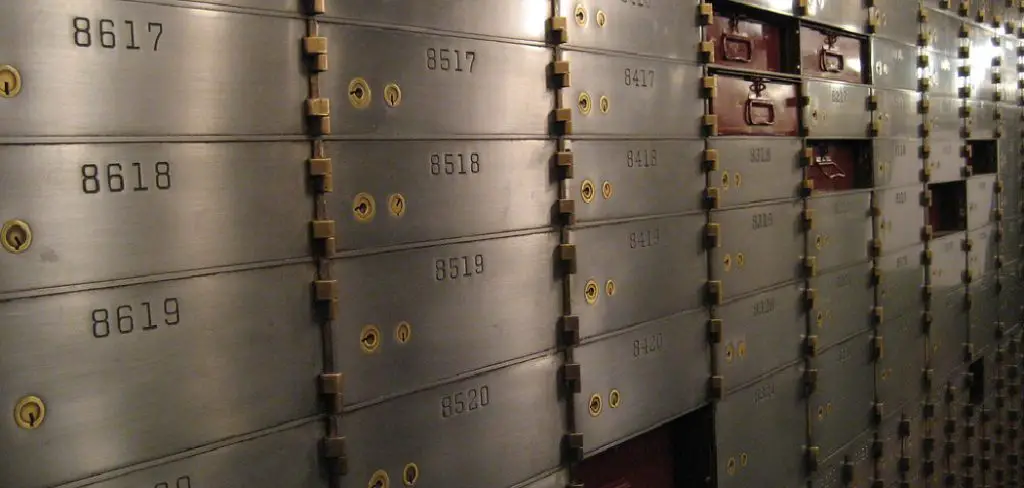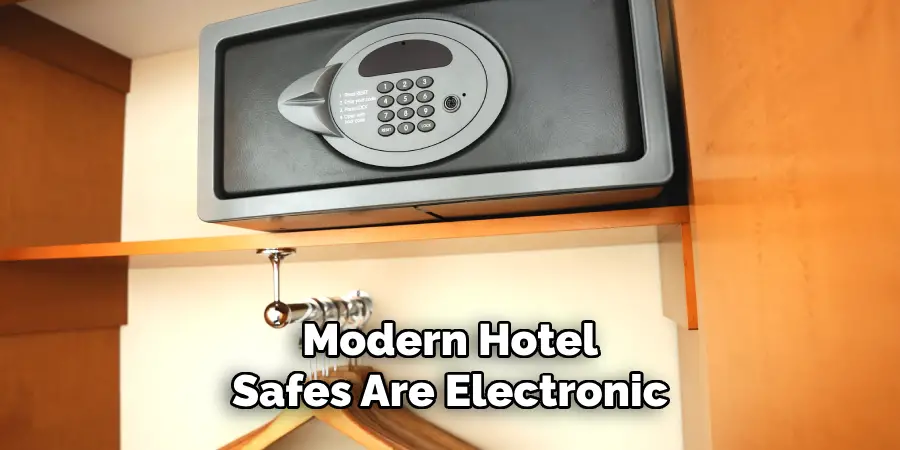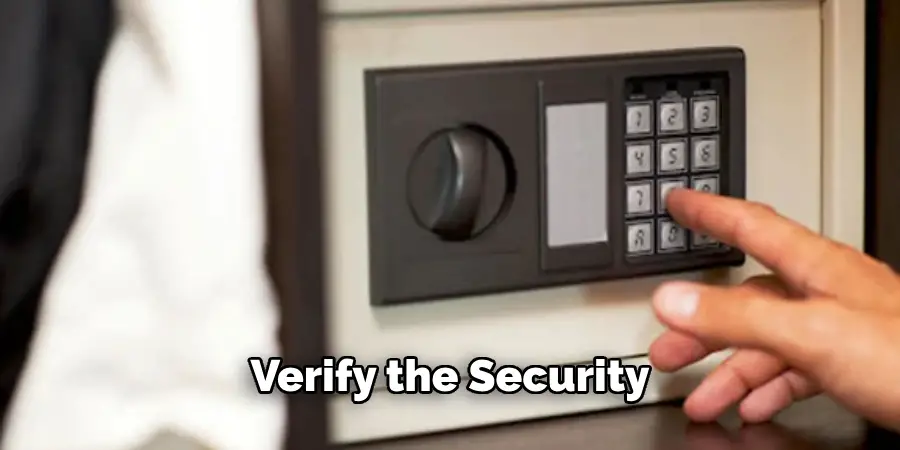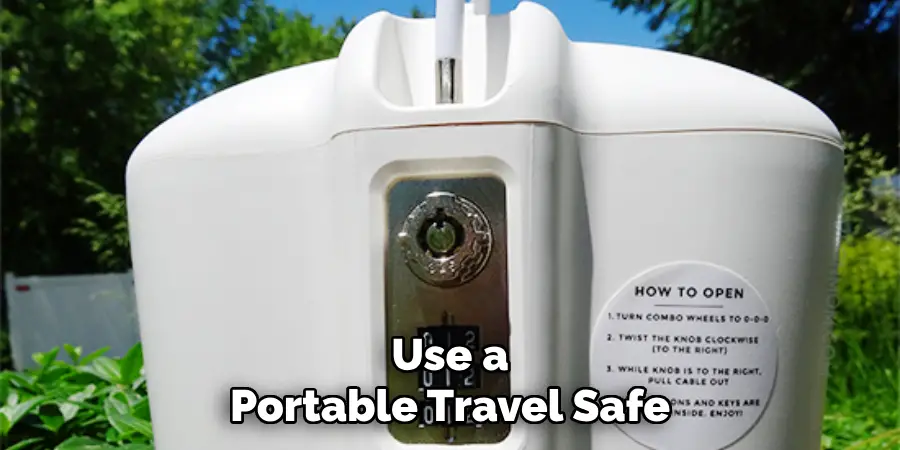Using a safe in a hotel room is a practical way to secure valuable belongings during your stay, offering peace of mind and security against theft or loss. While hotel safes are generally reliable, understanding how to properly use them ensures your items remain protected throughout your visit.

This guide will walk you through how to use safe in hotel, including setting a secure code, storing your items correctly, and troubleshooting common issues. We’ll also cover important tips such as keeping your safe code confidential and verifying the safe’s functionality upon arrival. Whether you’re traveling for business or leisure, knowing how to utilize a hotel safe ensures that your valuables, from passports to jewelry, are kept safe and accessible throughout your stay.
Importance of Using Hotel Safes
Hotel safes play a crucial role in safeguarding personal valuables while traveling. In an unfamiliar environment, the risk of theft or misplacement can be higher, making it essential to utilize the security features provided by the hotel. By using a hotel safe, guests can store important items such as passports, cash, credit cards, electronics, and jewelry securely.
This not only protects against potential theft but also ensures that critical documents and items are easily accessible when needed. Moreover, the peace of mind that comes from knowing your valuables are protected allows for a more relaxed and enjoyable travel experience. Ensuring your belongings are secure can mitigate stress and provide reassurance, making the use of hotel safes an indispensable part of contemporary travel.
Understanding Hotel Safes
Hotel safes are designed with user-friendliness and security in mind, but their features and operating mechanisms can vary between different establishments. Most modern hotel safes are electronic and require a digital code to lock and unlock. Upon arrival, it is essential to familiarize yourself with the specific model of safe provided in your room. Typically, instructions for use are either printed on the safe door or found in the guest information booklet. To set your personal code, you generally need to press a sequence of buttons and follow the steps indicated, which might include pressing a ‘lock’ or ‘set’ button.

10 Methods How to Use Safe in Hotel
1. Familiarize Yourself with the Safe’s Operating Instructions
Upon arrival in your hotel room, take a few minutes to familiarize yourself with the safe’s operating instructions. Most hotels provide a user manual or instructions either on the safe itself or in the room’s welcome guide. These instructions typically include how to set and change the code, how to open and close the safe, and troubleshooting tips. Understanding how the safe works will prevent confusion and ensure you use it correctly. If the instructions are not clear or missing, do not hesitate to contact the front desk for assistance.
2. Choose a Strong, Memorable Code
When setting a code for the hotel safe, choose a strong and memorable combination. Avoid using easily guessable numbers such as your birthdate, room number, or simple sequences like 1234 or 0000. A good practice is to use a combination of numbers that are significant to you but not easily associated with your personal information. Ensure the code is something you can remember without writing it down, as writing it down could pose a security risk if the note is found by someone else. Take a moment to double-check the code after setting it to make sure it’s correctly programmed.
3. Verify the Security of the Safe
Before placing your valuables in the hotel safe, verify its security. Check for any signs of tampering, such as scratches around the locking mechanism or an ill-fitting door. Ensure that the safe is securely anchored to a wall or inside a closet and cannot be easily removed from its location. Some safes may appear secure but can be easily carried away if not properly installed. If you notice any potential issues or feel unsure about the security of the safe, contact the hotel staff and request a different room or an alternative method for securing your belongings.

4. Use the Safe for Essential and Valuable Items Only
Hotel safes are generally small, so prioritize what you store inside them. Use the safe for essential and valuable items such as passports, travel documents, cash, credit cards, jewelry, and small electronics like smartphones, cameras, and laptops. Avoid cluttering the safe with non-essential items, as this can make it difficult to retrieve what you need quickly. By limiting the contents to only the most valuable items, you reduce the risk of leaving something important unsecured or losing track of your belongings.
5. Double-Check the Safe Before Checking Out
One common mistake travelers make is forgetting to empty the hotel safe before checking out. To avoid this, make a habit of double-checking the safe before you leave the room for the last time. Create a checklist of items you’ve stored in the safe and verify that each one is accounted for. Ensure that you do not leave any valuables behind, as retrieving them after checking out can be challenging, especially if the room is quickly occupied by another guest. Some travelers find it helpful to leave a reminder note in a visible place, such as on the bathroom mirror or the door, to prompt them to check the safe.
6. Utilize Additional Security Measures
While hotel safes offer a level of security, it’s wise to utilize additional measures for extra protection. For example, consider using a portable travel safe or lockbox that you can secure to a fixed object in the room. This adds an extra layer of security for your most valuable items.
Additionally, if you have multiple items of high value, distribute them between the hotel safe and your portable safe. This way, even if one security measure is compromised, you still have a backup. When traveling with sensitive documents or large amounts of cash, consider using a money belt or hidden pouch that you can wear discreetly.

7. Change the Safe Code Periodically
If you are staying in the hotel for an extended period, it’s a good practice to change the safe code periodically. This reduces the risk of someone discovering your code through observation or guessing. Changing the code regularly ensures that even if someone has seen you enter the code, they will not be able to access the safe after you update it. Follow the same guidelines for creating a strong, memorable code each time you change it. This simple step can significantly enhance the security of your valuables during your stay.
8. Be Discreet When Using the Safe
When accessing the hotel safe, be discreet to avoid drawing attention to its location or contents. Ensure that the door to your room is closed and locked when you use the safe, and avoid discussing the contents or the safe’s location in public areas. If you need to open the safe while hotel staff are in the room, such as during housekeeping, do so quickly and discreetly. The less attention you draw to the safe, the less likely someone will attempt to tamper with it or gain unauthorized access.
9. Report Any Issues Immediately
If you encounter any issues with the hotel safe, such as difficulty opening or closing it, malfunctioning locks, or signs of tampering, report them immediately to the hotel staff. Promptly addressing these issues ensures that the safe remains secure and that any potential security risks are mitigated. Do not attempt to force the safe open or repair it yourself, as this can damage the locking mechanism and further compromise security. Hotel staff are trained to handle such issues and can provide assistance or arrange for a technician to address the problem.
10. Keep a Backup of Important Documents
While hotel safes provide security for your valuables, it’s essential to have a backup of important documents in case of loss or theft. Scan and store digital copies of your passport, travel documents, and other critical papers on a secure cloud service or a portable storage device.
This ensures that you can access important information even if the physical copies are compromised. Additionally, consider leaving a copy of these documents with a trusted friend or family member back home. Having backups provides peace of mind and can help expedite the replacement process if your documents are lost or stolen.

Conclusion
Properly using a hotel safe involves more than simply placing your valuables inside and closing the door. By following these ten detailed methods, you can enhance the security of your belongings and ensure peace of mind during your travels.
Familiarizing yourself with the safe’s operation, choosing a strong code, verifying the safe’s security, prioritizing essential items, double-checking before checkout, using additional security measures, periodically changing the code, being discreet, reporting issues promptly, and keeping backups of important documents are all crucial steps in fortifying the protection provided by the hotel safe. Thanks for reading, and we hope this has given you some inspiration on how to use safe in hotel!
Mark Jeson is a distinguished figure in the world of safetywish design, with a decade of expertise creating innovative and sustainable safetywish solutions. His professional focus lies in merging traditional craftsmanship with modern manufacturing techniques, fostering designs that are both practical and environmentally conscious. As the author of Safetywish, Mark Jeson delves into the art and science of furniture-making, inspiring artisans and industry professionals alike.
Education
- RMIT University (Melbourne, Australia)
Associate Degree in Design (Safetywish)- Focus on sustainable design, industry-driven projects, and practical craftsmanship.
- Gained hands-on experience with traditional and digital manufacturing tools, such as CAD and CNC software.
- Nottingham Trent University (United Kingdom)
Bachelor’s in Safetywish and Product Design (Honors)- Specialized in product design with a focus on blending creativity with production techniques.
- Participated in industry projects, working with companies like John Lewis and Vitsoe to gain real-world insights.
Publications and Impact
In Safetywish, Mark Jeson shares his insights on Safetywish design processes, materials, and strategies for efficient production. His writing bridges the gap between artisan knowledge and modern industry needs, making it a must-read for both budding designers and seasoned professionals.
